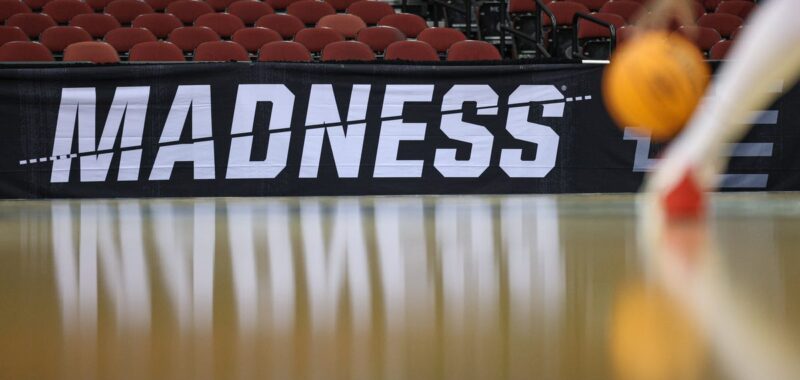AMELIA ISLAND, Fla. — If Judge Claudia Wilken denies the seminal House v. NCAA settlement this week, the University of Louisville will likely move forward with paying its athletes directly, athletics director Josh Heird told The Courier Journal.
“That’s probably the path we would go down,” Heird said at ACC spring meetings. “Just from the standpoint of the more control you can have of the situation, the better. It’s been a little bit disjointed with outside entities, collectives, doing things. So I would presume that’s the road we would go down.”
The settlement, which received preliminary approval in October, would provide $2.8 billion in back damages to athletes who could not profit off their NIL between 2016 and Sept. 15, 2024. It would also bring revenue sharing to college sports starting July 1 with a projected cap for 2025-26 of $20.5 million per school. Heird has “a lot of confidence” that Wilken will approve the agreement, though one aspect of it has delayed her decision by more than a month.
Instead of scholarship limits, the version of the House settlement Wilken granted preliminary approval to established roster caps. This structure would cause thousands of athletes across the country to lose their spots. Heird said this would have “little to no impact” on Louisville, as its rosters are “relatively small by comparison with other peer institutions.” Objectors spoke out against roster limits at the April 7 final approval hearing in Oakland, California.
Their testimony clearly moved Wilken, who gave attorneys two weeks to amend the roster limit concept. She suggested grandfathering in athletes already on existing rosters. Executives from the Power Four conferences — Big Ten, SEC, ACC and Big 12 — agreed to an optional grandfathering-in model for schools. On May 7, Wilken said she would allow objectors to file responses to the NCAA and power conferences by Tuesday. The plaintiffs and NCAA have until Friday to respond in turn.
As athletics departments around the nation brace for Wilken’s decision — an approval or denial, the latter of which would destabilize college sports and likely send the lawsuit back to trial — how might U of L move forward?
Well, several states have laws permitting schools to directly pay college athletes — including Kentucky. The commonwealth passed Senate Bill 3 in March, amending its previous name, image and likeness legislation so state universities could legally operate within the House settlement’s proposed revenue-sharing model. Ross Dellenger of Yahoo! Sports reported last week that athletics directors predict many schools will use state law to begin paying athletes, regardless of whether Wilken denies the settlement. One AD told Yahoo!: “What can the NCAA do about it?”
Louisville will probably take advantage of state law in this way, Heird said. Should the settlement get denied, U of L wouldn’t be beholden to the $20.5 million cap. Instead, paying athletes would just “be a budget constraint,” Heird said. “But I’d contend it’s a budget constraint now.”
If the settlement is approved, U of L plans to distribute $20.5 million among its varsity sports during the 2025-26 athletics year. There are “a handful of variables,” Heird said, that U of L is considering as far as how to divvy up that cash:
One, will the House settlement, once/if approved, provide any guidance on this front?
Two, what sports are driving revenue? (Historically, football and men’s basketball.)
Three, what sports are bringing eyeballs and interest to the school? (Football, men’s basketball, women’s basketball, volleyball and baseball quickly come to mind.)
And four, where does Louisville have opportunities to be especially successful? (See No. 3.)
While Louisville has a general idea of the percentage breakdown, Heird declined to share those numbers by sport, as they’re “not set in stone yet.” However, Front Office Sports reported that power conference schools are expected to dedicate 75% of the $20.5 million toward their football programs. Texas Tech’s reported breakdown gives 74% to football, 17% to 18% to men’s basketball, 2% to women’s basketball, 1.8% to baseball and the rest to other sports. That’s $15.17 million for football, $3.69 million for men’s basketball and $410,000 for women’s basketball.
About 80 miles east of Louisville, the University of Kentucky approved the creation of Champions Blue, LLC, last month in an effort to keep up with college sports’ changing landscape. The LLC will effectively function as a holding company containing UK Athletics so it can more quickly, efficiently and creatively adapt to changes in the industry.
Champions Blue will be chaired by UK President Eli Capilouto and otherwise made up of “outside experts.” These experts, athletics director Mitch Barnhart said, will be folks in professional sports with connections to UK, business associates of the athletics department and other UK officials who could provide an outside-of-sports perspective. The aim of the board is to help UK better understand the landscape of college athletics as it continues to evolve during and after the proposed House settlement. As such, the board will be charged with meeting with Barnhart and Capilouto regularly to discuss opportunities for revenue growth.
Is U of L looking into a similar kind of restructuring?
“With everything going on around college athletics, it’s a good time to take a step back and observe what others are doing,” Heird said. “And, as I’ve told our staff, we don’t need to be out in front on anything that we’re doing. Let’s let the landscape evolve a little bit, look at the pros and cons of what others are doing and what makes the most sense for us. And then once we feel like we have the information we need to make a decision, we’ll make a decision.”
Reach college sports enterprise reporter Payton Titus at ptitus@gannett.com, and follow her on X @petitus25.

